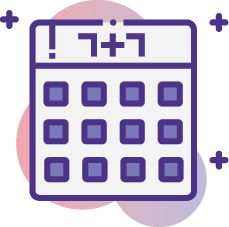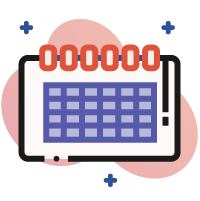Last week, Debbie Gross was presenting our #AdminsRock pre-conference and was chatting about Kanban boards. A few attendees were unfamiliar with them, so I decided to tell you all about them and why you want to use them!
We all know we need to stay organized and productive. Using Kanban boards, we can streamline our workflows, increase productivity, and keep tasks or projects on track. Originally developed by Toyota in the 1940s, Kanban has spread to virtually all industries to visualize workflow, limit work-in-progress, and maximize efficiency. The bottom line is that it helps you prioritize your tasks effectively by visually organizing them.
I already know I’m visual. I love sticky notes, reminders, and colors. A Kanban board works for my work style, and I bet that if you try it, it will work for you as well.
Understanding Kanban Boards:
Kanban boards are visual tools that help teams and individuals manage tasks and workflows effectively. The board typically consists of columns representing different stages of a process, such as “To Do,” “In Progress,” and “Done.” Tasks or sticky notes are moved across these columns as they progress through the workflow. It’s a manual system that works well for those who like space and sticky notes, but it is available in virtually all online programs (such as Asana, Wrike, Miro, Monday, or kanbantool.com).
I find the online boards easy, but I prefer the manual method. Manually moving my sticky notes around gives me a different sense of accomplishment.
Setting Up Your Kanban Board:
Once you decide whether you prefer an online or paper experience, you can set up your board.
1. Define Columns: Identify your columns that will show the stages of your work. As mentioned, standard columns include “To Do,” “In Progress,” “Review,” and “Done,” but you can customize these to fit your workflow. I personally use: “This Week,” “This Month,” and “This Quarter” to sort my priorities (along with other columns such as AdminsRock, ABC client, etc.). I even have a column for “Some Day,” which identifies things I want to do, but I haven’t put them formally on my to-do list yet.
2. Add Your Tasks: Write each task or project on a sticky note or digital card and place them in the “To Do” column. As you know, I’m a pro-color organizer, so I will also use colors to help me visually see what project or client is appropriate.
3. Move Tasks Across Columns: As you progress through your tasks, move them across the board from left to right. Tasks in progress should move to the “In Progress” column, then to “Review,” and finally to “Done” once completed. I do date things as well so that when I look at my “Some Day” column, I will ask myself if it really is a priority if it has been sitting in that category for too long (sometimes, I take it entirely off that list!).
Tips for Using Kanban Boards Effectively:
1. Keep it Simple: Avoid overcomplicating your Kanban board with too many columns or tasks. Keep it simple and focused on the most important tasks at hand. You can have more than one board (such as my “Some Day” or “AdminsRock Conference” board).
2. Prioritize Tasks: Use labels or color-coding to prioritize tasks and identify critical deadlines. Add them to “To Do” or “This Week” so you focus on what is a must do.
3. Update Daily: Make it a habit to update your Kanban board regularly to ensure that it accurately reflects the current status of your projects. If you get out of the practice of keeping it updated, it becomes more of a time waster than a time saver. I typically do this at the end of the day.
4. Keep Visual: If you use a paper-based system (think bulletin board), keep it in your vision at work (it works as a nice subconscious reminder). If you use an online version, always keep a tab on your browser open (also a subconscious reminder). Regardless of whether you are using paper or online, maximize your colors to help you quickly see the status of your tasks.
5. Ensure tasks are clear and specific. I’ve made this mistake in the past. I needed to get started on my annual #AdminsRock conference and wrote that down on my board. I put it on a nice bright sticky note, and it continued to stare me in the face. It was too broad of a category and felt overwhelming. The conference was not just one task, but hundreds of tasks. The conference was a category. Because my brain tended to discount it when it saw it on the board (that’s a big job – I don’t have time for a big job, etc. type thinking), it sat far too long. It was overwhelming and not clear.
The rules aren’t complicated, but if you follow them, you will feel a sense of completion and efficiency. It is far more organized and effective than a standard to-do list. By visualizing your workflow, you can stay organized, manage your tasks more efficiently, and ultimately achieve better results.
This article was written by Rhonda Scharf and not by artificial intelligence. I did use a lot of Google searches, though, to see how others used their Kanban boards!










